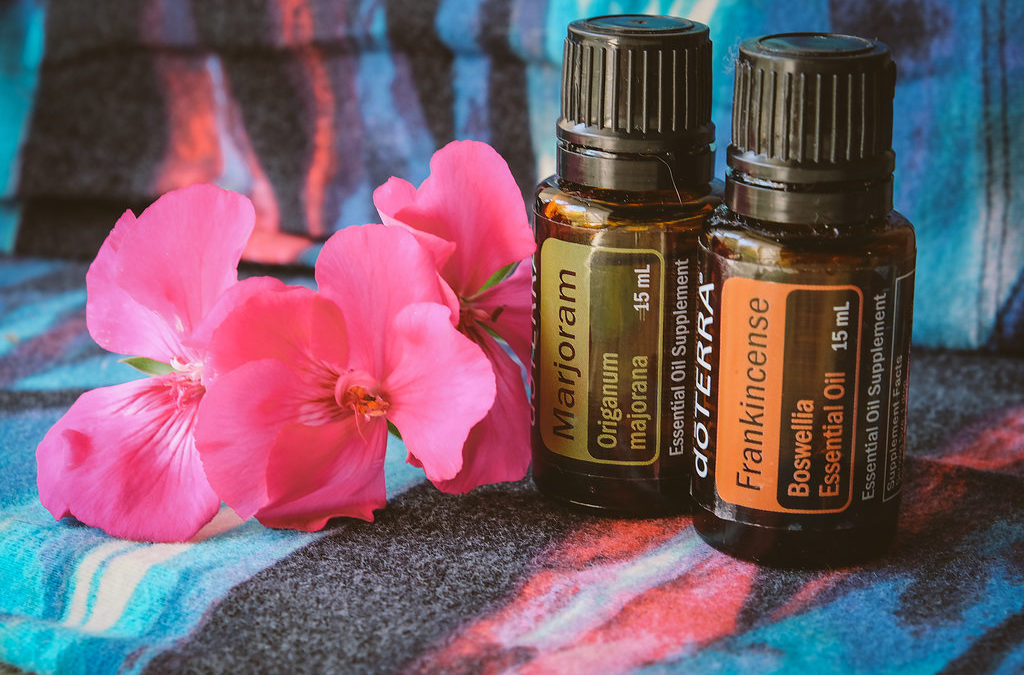
by nobody | Sep 29, 2017 | Yoga Therapy
A ROOT Awakening: The Essentials of Essential Oils: Tips, Tricks and Treats

Essential oils have been used throughout the world as one of nature’s more powerful tools to support our bodies’ healing systems. Even before there were expensive high-end oil diffusers, or the fun HSN segments to sell them, people were stocking up on their oils for relief from pain and discomfort. But contrary to popular belief, the benefits of essential oils extend far beyond just aromatherapy. Essential oils can be used for daily household use like cleaning and cooking as well has personal use like skin care. Whether it’s simply an individual oil like “lemon” or a blend of propriety oils like doTerra’s “breathe” (a combination that includes eucalyptus, peppermint, lemon, and cardamom), incorporating oils is a great way to boost your physical and emotional wellness.
About a year ago, a fellow yogi and dear friend introduced me to doTerra essential oils. I must admit that I felt like I already knew everything about oils. Like many yogis, I liked to rub a little lavender or chamomile on my hands for a comforting practice; eucalyptus for cleansing. But after reading case studies and books, and of course buying all sorts of oils and blends, I began to truly understand and experience how these natural solutions worked.

At the time, I was on the battlefield with adult acne and was tired of applying medical cream after medical cream on my face and seeing nothing but more acne! From all of my research, I learned that oils like frankincense and myrrh (yup, the ones from the Bible) carried anti-inflammatory and anti-aging properties, and melaleuca (otherwise known as tea tree oil) had anti-bacterial properties, I was off like a mad scientist making blends.
I began slowly by using oils (always diluted with a carrier oil) on my skin each night and within weeks saw results! That escalated into adding ginger oil to my morning smoothies for a digestive boost and shortly thereafter sleeping with various oils in my diffuser to promote relaxation and soothe nighttime allergies. I was (am) hooked! And it’s not because it’s a hot trend but because I’ve seen them heal my skin, ease my gut and keep me from catching that last nasty cold that went around.

It was only a matter of time before I started sharing oils and their benefits with my private clients and in group classes. I quickly learned that most people, like (the former) me, would buy any oils from wherever and put them in or on whatever with no rhyme or reason. Education about oils and the power of their use was missing in my community and frankly is still missing in most communities. As general interest in integrative medicine has risen, the popularity of essential oils has risen too. It seems like you can’t go to a spa, yoga studio or althleisure store without seeing an oil diffuser steaming away at the front desk.
So, for wherever you are on your oil journey – beginner, intermediate, or a convert like me – here are a few important things to consider when brining oils into your home and daily life.
#1. Quality Matters:
Just like you read the nutrition facts on the food you buy to ensure natural, chemical free ingredients and quality, the same thing goes for oils. If the field which the plant is growing on is sprayed with toxic chemicals or if chemicals are added into the soil, it will absolutely effect on the oil that comes from that plant. The use of toxins effect the purity and potency of the oil. Much like our food, regulation of oil quality is limited and standards are low. Many suppliers are self-regulated which can make things tricky for us consumers. Be sure to read the labels and look for the following:
- Watch out for words such as “fragrance oil,” “nature identical oil,” or “perfume oil.” These words indicate that what you see is not a pure oil.
- Just because a supplier promotes their oils as being “therapeutic grade” or “aromatherapy grade”, doesn’t mean it is. Remember, there is no governmental regulating body that grades or certifies essential oils. So, choose your supplier wisely.
- Keep in mind, quality oils are sold in sizes of 4 oz. or smaller and are stored in dark colored glass. Be cautious of vendors that sell oils at these sizes in plastic or clear glass containers. If you order oils online and they shipped in plastic or clear glass, be sure to transfer the oils immediately to dark colored glass bottles. This preserves the oil.
#2. Usage (the fun part!):
Oils can be used in so many ways and we don’t have the time to list them all but we will talk about a few of the most popular uses.

- Direct Inhalation and Diffusing: The easiest way to aromatically use oils is to literally open the bottle and take a whiff! You can also place a small drop in the palm of your hand, rub them together, and then cup the hands around the nose and breathe it in. Diffusing essential oils requires the use of diffuser which you can easily purchase online or through your essential oils supplier. Using a diffuser evaporates the oils into the air and can be beneficial for killing airborne pathogens, stimulating or relaxing the mind, and of course changing the aroma of a space. I personally find that diffusing oils is one of the most effective uses to impact respiratory conditions like asthma or snoring.
- Topical: As mentioned, oils are safe to use topically. Now, I use oils to help with acne/blemishes and skin repair. However, you can also use oils to help with joint pain, muscle aches, bug bites, scars, etc. When using oils topically, I ALWAYS recommended diluting the oil with a fatty carrier oil like coconut oil, jojoba oil, almond oil, or avocado oil. Remember, every drop of high quality essential oils contains a variety of potent compounds to deliver its powerful effects. That means that applying oils directly onto the skin for topical use can cause irritation and/or (depending on the oil) can cause the skin to be sensitive to light.
- Internal: The million-dollar question – are oils safe to ingest? The answer is yes! In fact, I don’t leave home without adding a few drops of lemon oil into my water to help alkalize my blood and energize my body. Oils can be taken internally for therapeutic effects or used to flavor food. Again, these oils are packed with potency. A small amount of oil is all that’s needed when using them internally. Because essential oils are fat soluble, they are ready to be delivered to all your vital organs including your brain! Internal use methods include placing 1-2 drops under your tongue, swallowing a veggie cap, or placing a few drops directly in drinks or food.

#3. Safety Tips:
Oils come from plants and (ideally) these are in pure form, so what could go wrong? Well, let’s not forget that just because something is natural does not mean it isn’t powerful and can have harmful effects if used improperly. With essential oils, it only takes a small amount to receive the benefits and it’s important to be aware of the previously mentioned do’s as well as a few don’ts.
- Never apply oils directly to the eyes or ear canals. If an oil gets into your eye use a drop of your carrier oil (not water, because water and oil don’t mix) to help with dilution.
- Start slowly when using oils for topical or internal use. This will give you the opportunity to observe how you react to an oil or supplement and determine what dosage is safe. For topical use, I suggest spot testing on a small area first to see how your skin reacts. For internal use, recommended dosages are listed on all supplements, but everybody is different. Note that some recommendations may be too strong for an individual.
- Always use a carrier oil when applying topically (especially for those with sensitive skin or compromised systems).
- If you have a critical health condition or are working with someone who does, the user should always consult a healthcare practitioner before using the oils.
- As with anything, it is always encouraged to do your own research prior to use.

If you are interested in learning more about how to start adding oils into your life and what oils you need to meet your holistic goals, contact me for a free 15-minute consultation. I’m also working on an essential oil webinar to share my recipes and techniques. Who’s in?
My Essential Morning Smoothie (adapted from doTerra):
- 1 heaping cup fresh spinach (or leafy green of choice)
- 1 heaping cup diced fresh or frozen pears or apples (cut fresh fruit and freeze for 1 hour)
- 1 tablespoon almond butter
- 1 cup unsweetened almond or flax milk
- 1 -2 drops of Ginger essential oil
- 1 drop Lemon essential oil
- 1/2 teaspoon vanilla extract (optional)
- 1 teaspoon raw honey or a few drop of stevia (to sweeten if desired.)

Reference:
2015, The Essential Life 2nd Edition, Total Wellness Publishing LLC
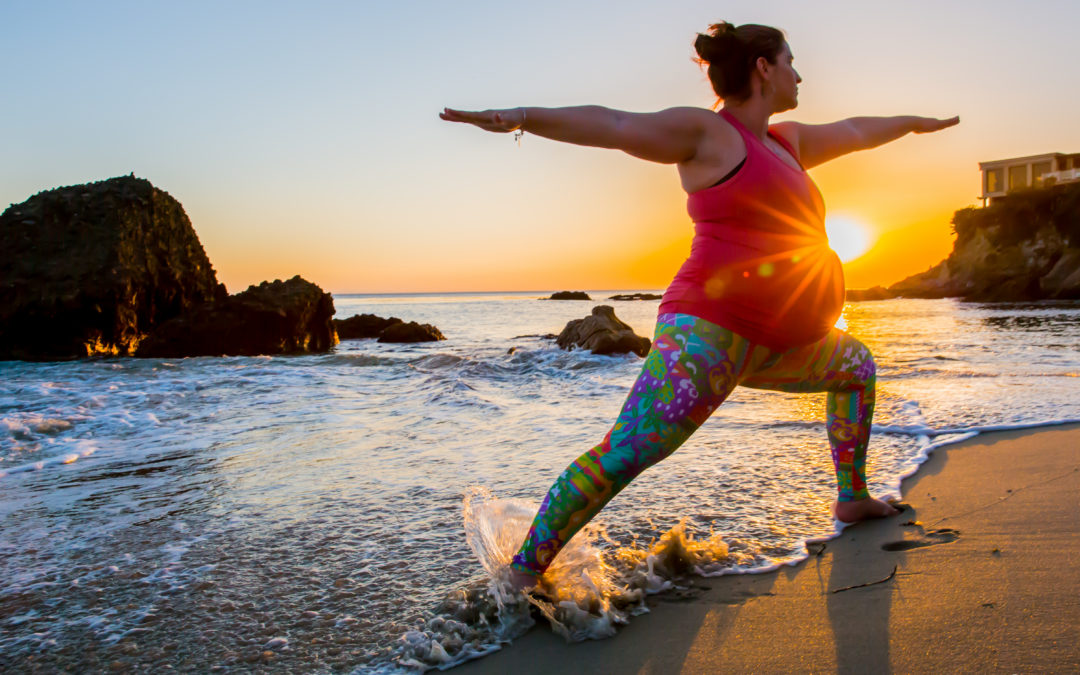
by Jasmine | Sep 22, 2017 | Yoga Therapy
A ROOT Awakening: Pregnancy, Healing and Finding Your Tribe
Guest blogger: Rebecca Hackett, Joyful Path Yoga Therapy, @joyfulpathyoga
A big “Thank You” to Rebecca Hackett for sharing her story about how finding her tribe led her towards her passion and her healing.
My Yoga Story
Like many people who have found their way to yoga, a physical issue first led me to starting my practice. My back first went out when I was 18 years old and away at college, and yoga was something that felt good no matter how my back felt. Good back day, bad back day, really bad back day – yoga was the one thing I could rely on by myself.
Shortly after starting yoga, I had my first back surgery to repair a herniated disc in 1998. The results of that surgery lasted for six years until I had to have another piece of disc removed from that same location (surgery #2) in 2006. In 2012, I had a spinal fusion (surgery #3) and then less than a year later I had abdominal surgery. If you’re keeping count that is four surgeries in 15 years. And for those of you who’ve had any type of surgery, you know about both the physical and emotional tolls this takes. I had been put through the wringer on all fronts. Yoga continued to be my go-to remedy for healing my wounds of every kind.
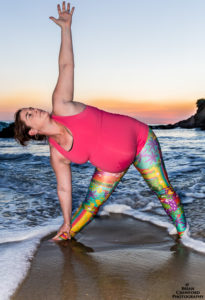 In 2013, I began the next step in my yoga journey, this time to becoming a yoga teacher and yoga therapist. I wanted to give back and help others find the healing that had been my lifeline through my traumas. Just as I decided to take this next leap, I was hit with a few more bumps in the road – I was laid off from my full-time job and soon found out that I was pregnant. I guess big life events like to happen all at one time! I was an unemployed, pregnant, surgery-prone, back-injured, yoga therapist in training. Although it had a nice ring to it, it was a lot to process all at once.
In 2013, I began the next step in my yoga journey, this time to becoming a yoga teacher and yoga therapist. I wanted to give back and help others find the healing that had been my lifeline through my traumas. Just as I decided to take this next leap, I was hit with a few more bumps in the road – I was laid off from my full-time job and soon found out that I was pregnant. I guess big life events like to happen all at one time! I was an unemployed, pregnant, surgery-prone, back-injured, yoga therapist in training. Although it had a nice ring to it, it was a lot to process all at once.
Again, as I did before, yoga became my path to empowerment and comfort. This time it was through my training as I learned all about the benefits of yoga therapy during and after pregnancy, especially to address the impacts to the body and emotions. Between receiving therapy for my back, and taking my classes, I did my best to practice yoga on my own and start reaping some of those benefits. However, this time yoga alone wasn’t enough. I realized that without a job, and without any other pregnant friends at the time, I was very lonely and feeling very isolated. After I delivered my daughter Lila via unplanned C-section (surgery #5) it became very clear in my post-partum life that finding a community of new mamas was going to be vital to my sanity and raising my daughter, and as a yogi I needed to find my “people”. I needed to find a way to fuse my individual yoga practice and teaching with the sense of community.
Note: My husband was very supportive throughout all of this. His job in the film industry kept (and to this day does keep,) him away from home long stretches of the day when I am at home with Lila.
Once I realized that community support was the missing link, it was still challenging to find other pregnant mamas going through the same feelings, sensations, weirdness and newness. I began looking for options in Southern California and found a surprising lack of variety in what was offered for new moms. I felt there was not only a gap I could bridge, but also the ability to create the community I was longing for while helping others through yoga therapy.

So I began teaching other mamas. I now offer Postnatal Therapeutic Yoga packages teaching new coping skills and a shift in focus. Yoga is comprised of eight different limbs and physical asana (yoga poses) is only one of those limbs. Other limbs that we draw on in yoga therapy are pranayama (breathing practices of which there are many,) meditation, the Yamas and Niyamas (how you treat others and how you treat yourself,) and we use these practices to relate to an individual’s lifestyle and support the changes. The beauty is that my clients get both the lessons and the sense of community all in one. My hands-on approach shows them that they are not alone and that they are connected to a wider network of folks going through the same thing.
Here’s how it works
- I begin by going to a new parent’s home. I do this for two reasons: 1) The obvious- if you’ve ever been a new parent or know one, you know how hectic packing up a baby can be and 2) This gives me the opportunity to see how things are set up in the home.
- On the first visit, the first thing I do is a general well check for the parent(s). Is there anything that they need while I am there or that I can help with? Specifically:
- Physical space – I also take a close look at how the parents move from the bed to baby in the middle of the night, where the changing table/area is, how they move around their home with baby, and their needs throughout the day.
- Feeding postures – I look at and address posture while feeding baby, standing, holding and rocking the baby, picking up based on from where, etc. I also teach the parent how to find a standing posture that is aligned and safe, which over time will build strength and potentially eliminate discomfort as much discomfort is based on poor posture.
- Next I will talk about breath and how we can use it so begin to strengthen and reconnect to the core. Most women (and people in general) have no idea of the benefits of focused breath work and the importance something we do unconsciously every single minute of every single day.
- From there we get into meditation, which can be a very important tool for self care as there are many ways to use it.
- With the breath centered movement we create an at-home practice. While there may not be enough time for a full workout, or the thought of a full workout might be overwhelming, the breath centered practice that we create is brief, manageable, broken up throughout the day, and based on daily lifestyle and habits.
 In addition to the above, I also help mothers and new parents with any resources or referrals that they might need. There are learning to navigate their way through new, unfamiliar, and sometimes uncomfortable territory, and there may be other types of support that is needed outside of my scope of practice. Every pregnancy is different and affects every woman differently, so the more individualized the care needs to be.
In addition to the above, I also help mothers and new parents with any resources or referrals that they might need. There are learning to navigate their way through new, unfamiliar, and sometimes uncomfortable territory, and there may be other types of support that is needed outside of my scope of practice. Every pregnancy is different and affects every woman differently, so the more individualized the care needs to be.
Lastly, as a yoga therapist I am a person giving this new parent undivided attention, allowing them the space to be and feel however they need to that day, acknowledging where they are and providing them the time to feel heard in everything that they need/want to say.
Through this teaching, I’ve found a community of mamas and new parents who I can nurture and learn from. I’ve found a calling in helping those who are going the same things that I went though and offering them yogic tools to help and empower themselves. I have also learned over time that my experience with chronic pain plays into helping a mama through the discomforts of being pregnant, of labor and delivery, and the family through the physical discomforts of having a newborn. Both chronic pain and having a child can be very lonely and isolating journeys if you don’t find some source of support and strength to help guide you through. These experiences can be life changing and identity changing. Although I have physically, mentally and emotionally been through a lot, it is that experience that guides me towards helping other get through similar times.

Rebecca Hackett, C-IAYT, YTRx-800C, RYT-500, RPYT, founded Joyful Path Yoga Therapy in 2013. She has been practicing yoga since 2000 and is a member of
Yoga Alliance and
International Association of Yoga Therapists (IAYT). She is a graduate of the accredited Yoga Therapy (YTRx) program at Loyola Marymount University, a four year training, including an internship year working with chronic pain patients at Venice Family Clinic. Rebecca teaches Mom & Baby Yoga, Prenatal Yoga, Toddler Yoga, Senior Yoga and Strollga as part of the Baby Boot Camp Program. Rebecca also sees clients privately for either yoga or yoga therapy, creating individual programs based on the person’s immediate needs, physically, mentally, emotionally and spiritually. To contact Becca about her yoga therapy sessions you can look at her offerings on
www.joyfulpathyogatherapy.com, email her at
info@joyfulpathyogatherapy.com or call/text 424-255-8890.
Looking for a workshop on back wellness? Check out her upcoming Healthy Backs workshop on October 1, 2017. Register here: http://liveyogawellness.com/healthy-back/
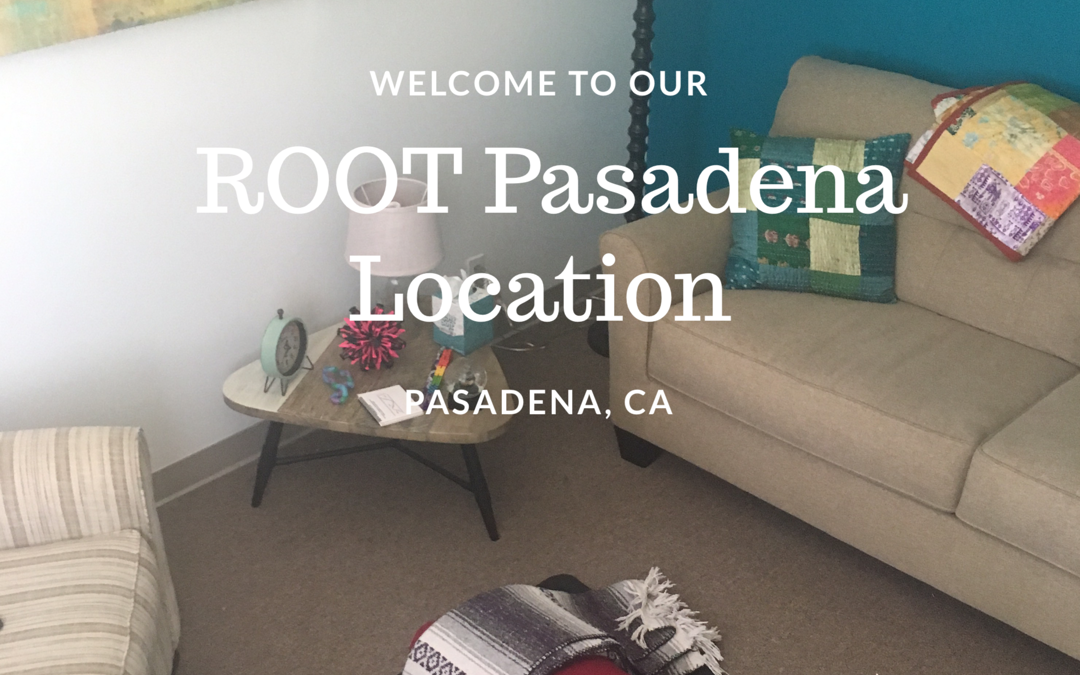
by Jasmine | Sep 15, 2017 | Yoga Therapy
I’ve always loved September because it marked yet another beginning and end in the year. Growing up with a teacher for a mother, September marked the end of summertime playfulness and the beginning of an exciting new school year full of new things to learn and ways to grow. And although I’m older, and no longer watch my mother prepare the curriculum for the year ahead or take those school supply shopping sprees to Staples, I still use this time of year as a fresh opportunity to plan, expand and progress.
With that said, this week’s entry is all about ways we’ve been growing. Check it out!
1.Visit our new location
We just moved into a new office and healing space in beautiful Pasadena, California. This has been a big transition as we consolidated our west side practice (Mondays/Wednesdays) to allow us to serve out east side community. Finally, we are here and can’t wait for you to visit. Appointments for private sessions are open (Tuesdays/Thursdays).
Schedule today and grab a free 15- minute consult!
2. Let’s get virtual
Is Pasadena too far for you to travel? Perhaps you’re in another county, state or country. For my Angelenos, maybe it’s closer than you think but the 110 Freeway is not your favorite. Have no fear, we’ve got you covered! Tap into healing and habit change from the comfort of your own computer or device! We’re now set up for Skype consultations and sessions to deliver our ROOT remedies wherever you are around the globe. As with our in person sessions,
schedule today and grab a free 15-minute consult!3. Bring ROOT to your group
And as much as we love our private clients, we also get pumped to work with groups within companies, professional organizations, or events. In the past month we’ve hosted a lunch and learn on Breathing and Stress Management for Palisades Media Group, talked Mindfulness and Lawyering for The Esquire Network, and were honored to participate in a special evening event about Breathing and Breast Cancer Awareness for the Brighton company. Interested in bringing a little ROOT to your next meeting, event, or workspace?
Reach out for details.
4. Join our workshop: Changing Our Habits to Heal in the New Year
Saturday, November 11, 2017
With only a few months left in the year, a lot of us are already thinking about what we to change or tackle in 2018. We’re excited to announce that we’re teaming up with
Yoga Works Brentwood to share ways to for your resolutions to really stick in the new year. Save the date and check for back for details!
5. Listen to our story
Recently, I had the opportunity to share my journey on finding my passion, inspiration, and developing my mission for ROOT on
“A Breath of fresh Awe.” The intention for this podcast was simply to share my personal experience and insights, raise awareness about the power and practice of yoga therapy, and hopefully offer comfort and hope to those who may be feeling stuck.
Have you heard? We partnered with some great companies to help you look and feel your best!
- Silly Yogi and ROOT Yoga Therapy: Being part of our ROOT tribe comes with some great perks. Silly Yogi is a lifestyle brand that offers affordable bohemian-inspired apparel for your yoga practice and everyday bliss.Use promo code ROOT to get 15% off your purchase at Silly Yogi Apparel!
* We love giving back and that’s why we are donating 100% of the proceeds earned from Silly Yogi Apparel to Team Rubicon in an effort to help the victims of Hurricane Harvey.

- doTERRA and ROOT Yoga Therapy: Did you know that essential oils can play a significant role in healing? doTERRA was built on the mission of sharing therapeutic-grade essential oils with the world. Having seen for themselves the incredible benefits that can be had from using these precious resources, a group of health-care and business professionals set out to make this mission a reality. They formed a company and named it doTERRA, a Latin derivative meaning “Gift of the Earth.” Currently, research is being done to demonstrate how essential oils can positively effect mood, productivity, stress, pain and fatigue. But, what is an essential oil anyway and how do they work? Schedule a free 15-minute virtual consultation to get the run down on which oils you might be needing in your life and in your home!

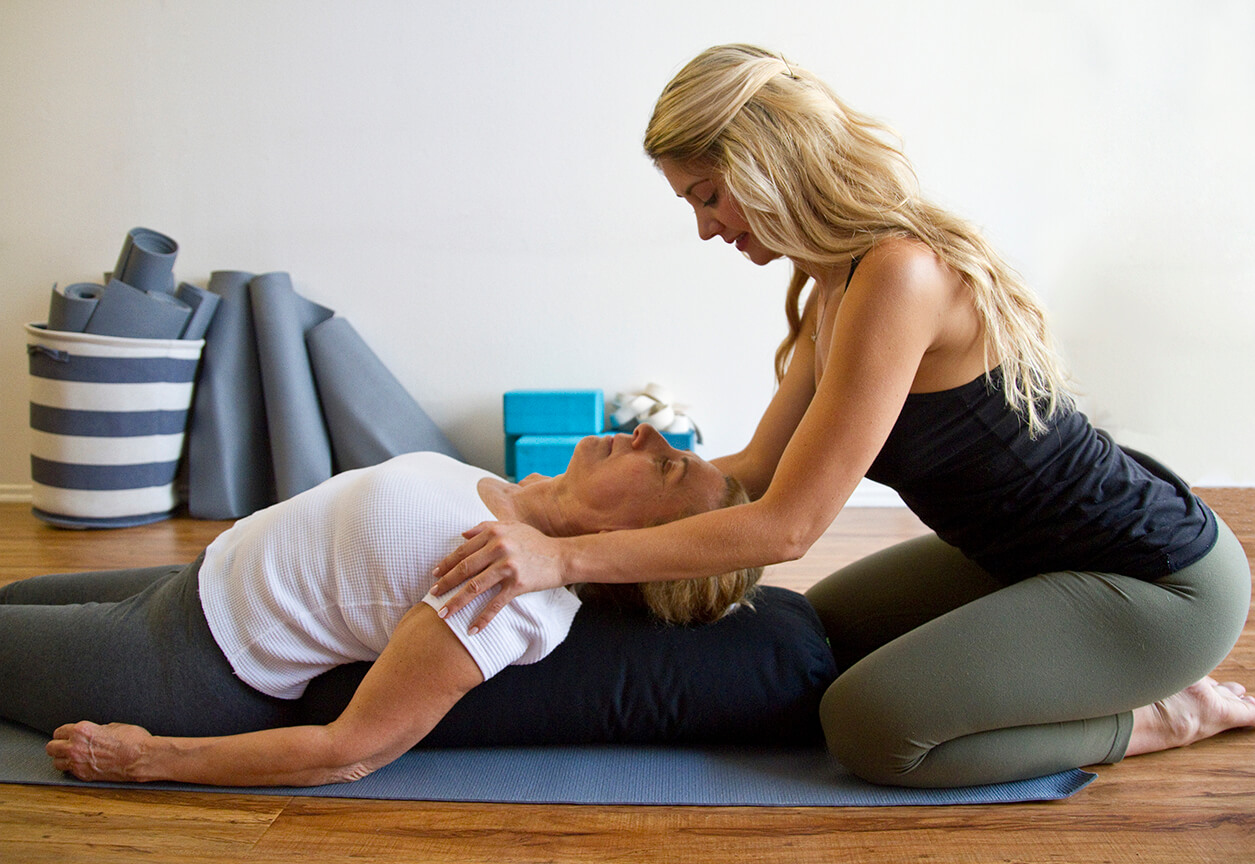
by Jasmine | Sep 8, 2017 | Yoga Therapy
A ROOT Awakening: Family Ties: Healing What We Inherit
Do you have something in your home that has been passed down through generations? Maybe it’s some jewelry, fine china, a cozy quilt. One of my favorite items is my grandmother’s diamond pendant.
Now think about some of the physical characteristics that have been passed down to you – hair, eye color, nose shape, body type, etc. Which attributes do you love? Which do you roll your eyes about and sarcastically think “thanks a lot, dad!”
 Let’s go down another layer to what you cannot see – the intricate patterns of your DNA. The popularity of direct-to-consumer genetic testing from sites like Ancestry.com, and 23andme have highlighted our desire to dig deeper into our genetic identity as a means of truly knowing ourselves. Just like in yoga, it’s these layers – what lies underneath – that play an important role in what we experience on the surface.
Let’s go down another layer to what you cannot see – the intricate patterns of your DNA. The popularity of direct-to-consumer genetic testing from sites like Ancestry.com, and 23andme have highlighted our desire to dig deeper into our genetic identity as a means of truly knowing ourselves. Just like in yoga, it’s these layers – what lies underneath – that play an important role in what we experience on the surface.
Over the last few years, researchers have become increasingly interested in the study of gene expression modification known as epigenetics. Meaning, scientists are looking at the changes in the way genes are expressed versus alterations in genetic code. There is evidence to suggest that our DNA can be shaped by the psychological experiences of our past. Powerful emotions of any kind from our relatives can be imprinted on our genetic make-up and influence how our bodies react to certain events.
In yoga, we relate this to the word samskara, which can be translated as “the impact of” (an action, mental or physical) or “the impression of” (an action, mental or physical). Samskaras are habits that are so ingrained, that they have literally changed the way our minds respond to certain stimuli. Samskaras are not inherently negative. Some drive our subconscious towards giving back and nurturing, but others can prevent us from positive self-growth and in fact, can fuel anxiety, depression, addiction, and pain. This is especially interesting when recalling traumatic events (ie: the holocaust, war, slavery, etc.) that our parents, grandparents or even great grandparents may have experienced.
In a recent article published by Gizmodo, author Kristin Brown highlights a study done by Mount Sinai Hospital in New York which found evidence of “epigenetic inheritance in mice, rats and even humans. In 2015, a research team at New York’s Mount Sinai hospital looked at how trauma suffered by Holocaust survivors is capable of being passed on to their children. They analyzed the genes of the children of 32 Jewish men and women who had been interned in a Nazi concentration camp during WWII, and found evidence of genetic changes to one gene associated with the regulation of stress hormones in children, that appeared related to epigenetic tags on their parents’ DNA. This is significant, because how such genes are regulated can determine how a person deals with stress.”

Click here for the full report.
Being of Jewish decent, this study hit home. I couldn’t help but wonder how my ancestry influenced the way I handle stress. And if stress is the leading cause of chronic illness, inflammation and pain, how do I unravel the transgenerational trauma of the past to heal my present? Although I understood the notion of samskaras, I generally related this to my personal childhood experiences and not necessarily generational adversity. I began to reflect on some of my habits and behavioral patterns in relationship to my family struggle. It also made me interested in learning even more about my clients’ family history to more completely understand the origin of some of their symptoms and why certain habits are such a challenge to shift.
After some personal and professional exploration, here are 3 steps I am currently using to begin to break free from undesired transgenerational samskaras.
Step 1: Intention. Healing these deep seeded wounds does not happen by accident. As we’ve discussed in past blogs, intentions are powerful and act as the constant thread that can guide us when we are tempted to veer of track.
Learning about what your parents, grandparents, great grandparents (and so on) faced can provide a wealth of knowledge about your own survival patterns. If you can, call or visit a family member, ask them questions and learn about the past. Did something traumatic happen? When we approach these challenging shifts with intention, we are more likely to stay focused even when it’s tempting to drop back into the unwanted, yet comfortable and familiar patterns. (Click here to read our blog on the power of intention).

Step 2: Burn baby burn! (And no, I am not talking about going into a hot yoga studio.) In yoga, the word tapas meaning “heat” or “cleanse”, provides the purification for change. Think of tapas as that little flame inside of you that keeps you motivated and on track. Tapas can also mean cultivating a sense of self-discipline, to burn away physical, mental and emotional samskaras, opening the door to growth. Remember, “discipline” does not mean “difficult”. Cultivating tapas can include yoga asana (poses), chanting, breathing or meditation. It’s probably no surprise that I love using various breathing techniques to raise body temperature and ignite the mental fire to change my (often repetitive) thinking patterns. Two of my favorite breathing techniques to build tapas include Ujjayi breathing (victorious breath) or Kapalabhati (breath of fire).
Step 3: Self-study. Before diving in, it’s important to note that we must always approach this step from a place of positivity, compassion and love. Studying is the foundation of learning, growing and evolving. Self- study is about turning inward and observing our actions, reactions, emotions and of course, habits. The goal is to be curious about tendencies that aren’t useful which gives us a chance to let go with more at ease. Self-study guide questions can include:
- How do I treat myself?
- What are my beliefs and attitudes about who I am?
- Do these attitudes support or limit me?
- Am I loving and compassionate towards my body and myself?
Practicing mindfulness is an excellent tool to cultivate the study of self. Carving out time to observe how the experience of breathing affects you in the moment or to notice the thoughts, emotions, and sensations being experienced in the body are simple ways to integrate this step into daily living.
There’s no doubt that the discovery of epigenetics makes getting to the ROOT a bit tricky. On the flipside, this knowledge is also a gift. If we know that some of what we experience is passed on, that also means we have the power to shift these habits and break the unwanted samskara loop for future generations.
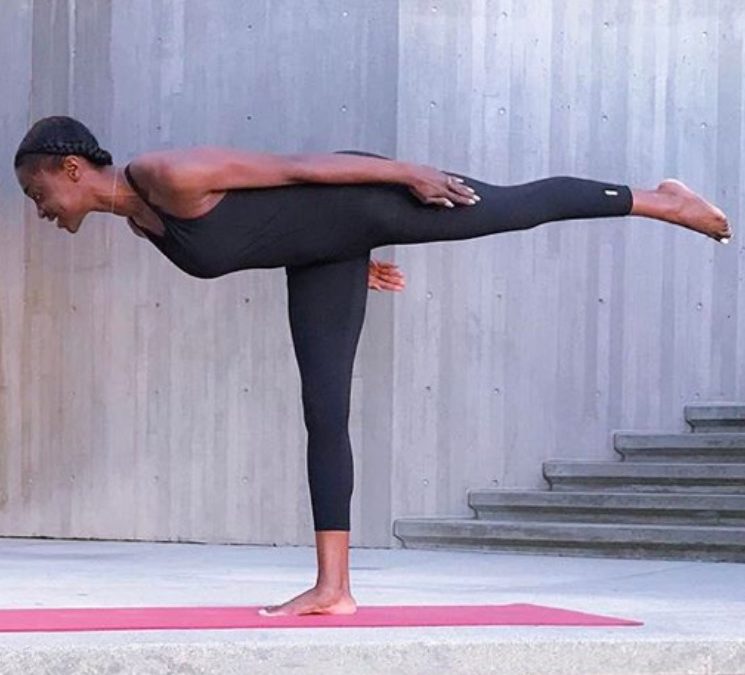
by Jasmine | Sep 1, 2017 | Yoga Therapy
ROOT Hero Melitta Johnson: Managing Grief and Giving Back
As I drive into the golf course parking lot in Palos Verdes, California, a thick fog begins to cover the horizon. It feels like I’m in Seattle in December instead of Southern California in August. I park, get out and notice how the fog has become so thick that it’s starting to create droplets on my sweater.
The cold doesn’t last long as I’m instantly warmed by my surroundings. I’m welcomed by bursts of warm yellow roses, shiny gold letters that say “ELGIN,” and one bright smile from the host – the energetic Melitta Johnson. I ventured out in the wee hours of the morning to meet Melitta and support her non-profit’s first annual “Swing into Mental Health Wellness” golf tournament and breakfast.

Meet Melitta Johnson – our ROOT Hero of the month! Like our past heroes, Melitta is a busy woman. She’s a mother of three (Jailyn, Orlando Jr., Jacob), a dedicated yogi (follow her 100+ days of handstands on her Instagram story), and mental health wellness advocate. Melitta is the founder of “The Elgin Foundation for Wellness (TEF)”, a 501 c(3) non-profit dedicated to starting healthy conversations about mental health and wellness, eliminating mental health stigma, and preventing suicide. This is especially needed in the African American community where such topics are historically seen as taboo or as a sign of weakness.
TEF’s mission is a topic very near and dear to our hearts at ROOT as we also believe in empowering people to recognize and treat all facets of their health – mind, body, soul – equally. That’s how you get to the root and really create habit change. But it’s not just the foundation’s mission that makes Melitta our hero.

The foundation is named after her younger brother Elgin Olu Stafford who, in 2012, lost his battle with anxiety and depression to suicide. He was only 23 years old. The sudden tragedy shook Melitta and her close-knit family to the core. This type of grief can be all consuming and insurmountable for most people. How would they move forward? How would they heal and still honor the spirit of the one who has passed far too soon?
There is no true “one size fits all” for dealing with matters of grief because everyone grieves differently (see our blog on grief and yoga therapy). It’s a journey that we must approach with self-awareness and self-understanding. Through her personal journey, Melitta found her method for dealing with grief – educating communities on the importance of mental health wellness. She’s set a powerful intention to help people avoid the pain that her family endured due to a lack of knowledge about mental illness and suicide. The loss of Elgin is profound, but through the foundation Melitta can bring real change to others.
Through “The Elgin Foundation”, Melitta has found a way to address the suffering that Elgin experienced while practicing her own self-care. “By doing something for others I’ve been able to start mending my own wounds. This goal has given me so much hope and has inspired me to keep my brother’s memory alive. I have a focus and a purpose to spread love and offer guidance on wellness, just as Elgin would.”

With only one year in operation, Melitta’s foundation has had a real impact. They’ve created a powerhouse founding board (one of the founders is the first African American woman to achieve Chieftaincy within the LGBO tribe in Nigeria), hosted numerous events around mental health, and partnered with other organizations to hand out over $55K college scholarships to local teenagers.
Back at the event, the scholarship recipients are honored as each of their names are called to accept their awards. “Yet another way to feed my soul,” Melitta shares over a cup of coffee that morning. “If I can help young people on their paths and, at their age, instill in them that working on mental health does not reflect weakness and that mental health wellness is wellness, then I know they’ll be off to a great start in anything they pursue.“
Melitta’s journey of healing is far from over – this type of pain sometimes never heals – but through her work with the foundation she has a renewed sense of strength and empowerment. She got to the ROOT and found that the best way to care for herself was to be of service to others. For her self-care, she inspires others to slow down, be self-aware and self-forgiving, all vital lessons that we practice here at ROOT.
So, what’s next up for our hero? Melitta is continuing to spread her passion by pursuing her Yoga certification. She’ll soon be able to share yogic tools through “#beeWellwithMel,” which will advance her work in the mental health wellness space. Even Superman has to be Clark Kent sometimes. Let go and be vulnerable when you need to be,” Melitta says to the crowd. “Wellness is a way of life!”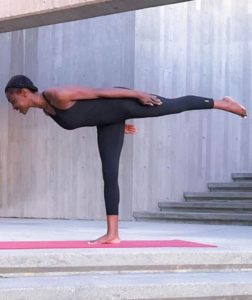
I look back at our ROOT Hero as she poses with a big picture of Elgin. There are happy birthday balloons tied to the frame in celebration – he would have been 29 years old today. Melitta smiles because she knows he’s there with her. I can feel the bittersweet energy of the moment but more so her determination to inspire change.
Have you experienced loss? How have you managed your grief? How have you practiced self-care to begin or continue through the healing process? Share with us!
Join me in congratulating Melitta for being our ROOT Hero of the month! Learn more about Melitta and The Elgin Foundation by visiting their website www.theElginFoundation.org , on Facebook (https://www.facebook.com/theelginfoundation/) on Instagram @beeWellwithMel @theelginfoundation and on Twitter @ElginWellness.






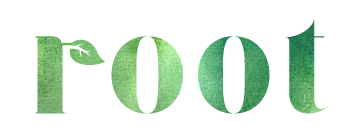





 In addition to the above, I also help mothers and new parents with any resources or referrals that they might need. There are learning to navigate their way through new, unfamiliar, and sometimes uncomfortable territory, and there may be other types of support that is needed outside of my scope of practice. Every pregnancy is different and affects every woman differently, so the more individualized the care needs to be.
In addition to the above, I also help mothers and new parents with any resources or referrals that they might need. There are learning to navigate their way through new, unfamiliar, and sometimes uncomfortable territory, and there may be other types of support that is needed outside of my scope of practice. Every pregnancy is different and affects every woman differently, so the more individualized the care needs to be.

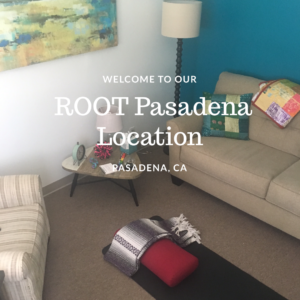













Recent Comments